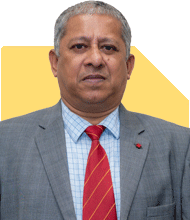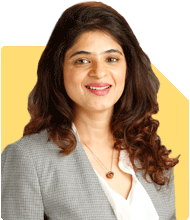Ramalingam Kalirajan |8459 Answers |Ask -Follow
Mutual Funds, Financial Planning Expert - Answered on May 26, 2024
He has an MBA in finance from the University of Madras and is a certified financial planner.
He is the director and chief financial planner at Holistic Investment, a Chennai-based firm that offers financial planning and wealth management advice.... more

I am 40 and my husband is 44yrs old together we earn 2lakh per month, we have housing loan for 80 lakh and 18lakh respectively, I have a 13yr old daughter how can I save money for our retirement and child higher education, please guide
Your combined monthly income of Rs 2 lakh is a solid base to build on. Managing housing loans while planning for retirement and your child's education requires a strategic approach. Let’s break it down step by step.
Understanding Your Financial Situation
You have an Rs 80 lakh housing loan and another Rs 18 lakh housing loan. Balancing these loans with your income and future goals is key. Your daughter is 13, so you have a few years to save for her higher education.
Setting Clear Financial Goals
1. Retirement Planning
You and your husband need a comfortable retirement plan. Think about the lifestyle you want post-retirement and estimate your expenses.
2. Child’s Higher Education
Higher education can be costly. Estimate the amount needed for her college fees, living expenses, and other related costs.
Creating a Budget
A well-structured budget helps manage expenses and savings efficiently. Allocate portions of your income to different needs:
Housing loan EMIs
Household expenses
Emergency fund
Investments for retirement
Savings for child’s education
Reducing Debt
Prioritise Debt Repayment
Focus on repaying the higher interest loan first. This reduces your financial burden faster and frees up money for savings and investments.
Consider Refinancing
Explore refinancing options to lower your EMIs. This can give you more disposable income to allocate towards your goals.
Building an Emergency Fund
An emergency fund should cover 6-12 months of living expenses. This protects you from financial shocks and prevents dipping into retirement or education savings.
Investing for Retirement
Diversified Portfolio
Invest in a mix of equity, debt, and hybrid funds. This balances risk and returns, ensuring steady growth over time.
Equity Funds
Given your risk appetite and time horizon, equity funds can offer higher returns. They are suitable for long-term investments.
Debt Funds
Debt funds provide stability and are less volatile. They help preserve capital and provide steady income.
Hybrid Funds
Hybrid funds invest in both equity and debt, balancing growth and safety. They are ideal for medium to long-term goals.
Saving for Child’s Higher Education
Systematic Investment Plan (SIP)
Start a SIP in equity mutual funds dedicated to your daughter’s education. This ensures disciplined savings and benefits from rupee cost averaging.
Education-specific Plans
Consider child education plans offered by mutual funds. These are tailored for education needs and provide a mix of growth and safety.
Regular Monitoring and Rebalancing
Track Your Investments
Regularly review your investment portfolio. This ensures your investments are performing well and aligned with your goals.
Rebalance Annually
Rebalance your portfolio annually to maintain the desired asset allocation. This keeps your investments on track to meet your objectives.
Consulting a Certified Financial Planner
A Certified Financial Planner (CFP) can provide personalised advice. They help you create a tailored investment strategy and navigate financial challenges.
Tax Planning
Utilise Tax Benefits
Make use of tax-saving instruments under Section 80C and 80D. This reduces your taxable income and increases your savings.
Tax-efficient Investments
Invest in tax-efficient funds that offer better post-tax returns. Consult with your CFP for suitable options.
Insurance Coverage
Life Insurance
Ensure adequate life insurance coverage for both you and your husband. This secures your family's financial future in case of any unfortunate event.
Health Insurance
A comprehensive health insurance plan protects you from high medical costs. It preserves your savings for retirement and education.
Final Thoughts
Your dedication to securing your financial future is admirable. By following these steps, you can effectively manage your loans, save for your daughter’s education, and plan for a comfortable retirement. Stay disciplined and periodically review your financial plan to ensure you are on track.
Best Regards,
K. Ramalingam, MBA, CFP,
Chief Financial Planner,
www.holisticinvestment.in
You may like to see similar questions and answers below
Ramalingam Kalirajan |8459 Answers |Ask -Follow
Mutual Funds, Financial Planning Expert - Answered on Apr 15, 2024
Ramalingam Kalirajan |8459 Answers |Ask -Follow
Mutual Funds, Financial Planning Expert - Answered on May 03, 2024
Ramalingam Kalirajan |8459 Answers |Ask -Follow
Mutual Funds, Financial Planning Expert - Answered on Aug 21, 2024
Dr Nagarajan J S K |406 Answers |Ask -Follow
NEET, Medical, Pharmacy Careers - Answered on May 16, 2025

Based on my understanding, no one usually requests a birth certificate at this age. Your inquiry relates to the period before and after independence. In those days, they would accept the SSLC book if you didn't have a birth certificate. However, I am not sure if that was the case during your time.
Instead, you can present your Aadhaar card, which likely includes your original date of birth. You can utilize that information.
If my response doesn't fully address your concerns, I recommend consulting a Notary Public for further assistance.
BEST WISHES.
THANK YOU SIR.
with regards
Prof Suvasish Mukhopadhyay |651 Answers |Ask -Follow
Career Counsellor - Answered on May 16, 2025
Prof Suvasish Mukhopadhyay |651 Answers |Ask -Follow
Career Counsellor - Answered on May 16, 2025
Radheshyam Zanwar |1634 Answers |Ask -Follow
MHT-CET, IIT-JEE, NEET-UG Expert - Answered on May 16, 2025
Radheshyam Zanwar |1634 Answers |Ask -Follow
MHT-CET, IIT-JEE, NEET-UG Expert - Answered on May 16, 2025
Ashwini Dasgupta |107 Answers |Ask -Follow
Personality Development Expert, Career Coach - Answered on May 16, 2025
Ramalingam Kalirajan |8459 Answers |Ask -Follow
Mutual Funds, Financial Planning Expert - Answered on May 16, 2025
Ramalingam Kalirajan |8459 Answers |Ask -Follow
Mutual Funds, Financial Planning Expert - Answered on May 16, 2025
Milind Vadjikar |1236 Answers |Ask -Follow
Insurance, Stocks, MF, PF Expert - Answered on May 16, 2025
Milind Vadjikar |1236 Answers |Ask -Follow
Insurance, Stocks, MF, PF Expert - Answered on May 16, 2025











.jpg)












